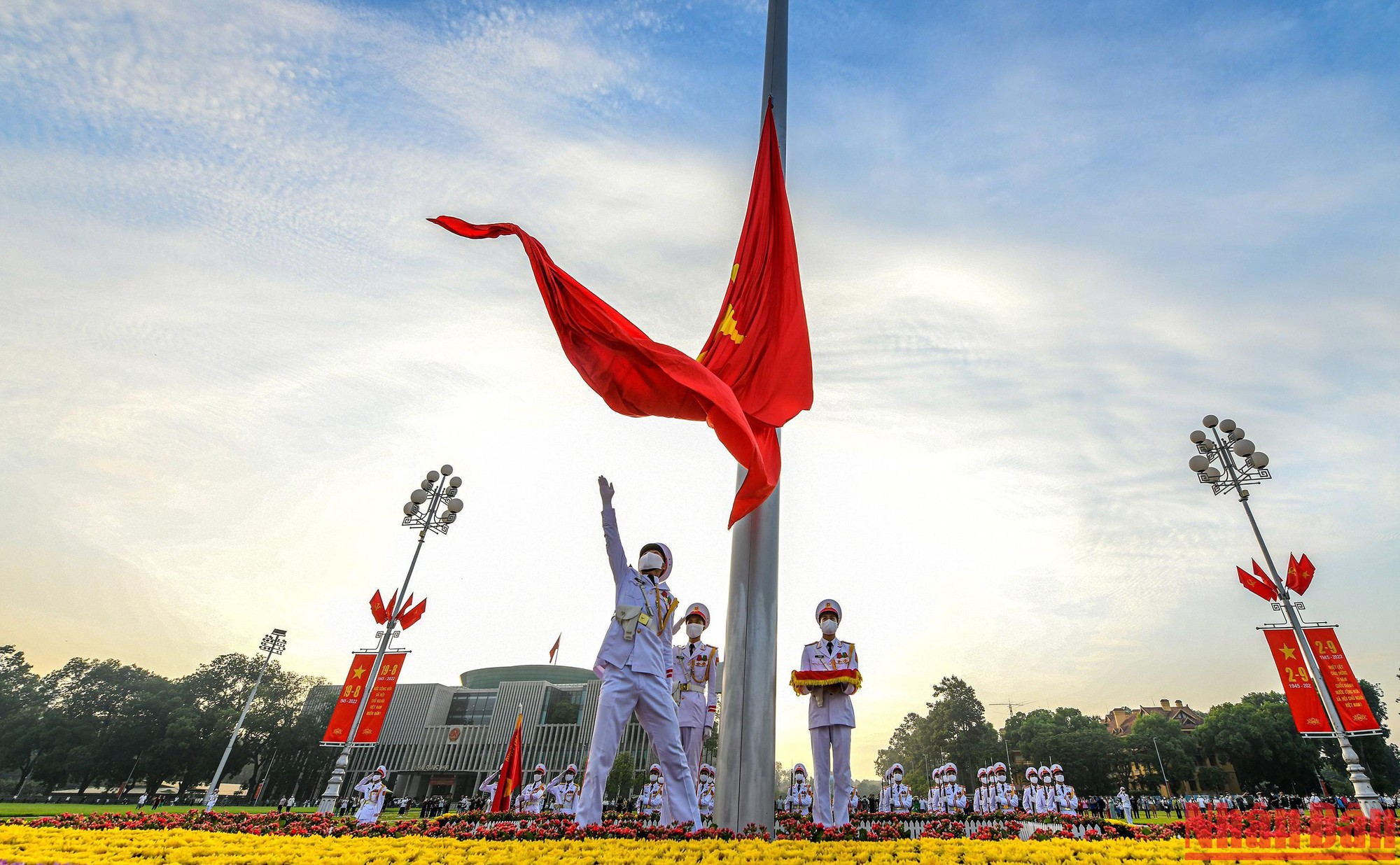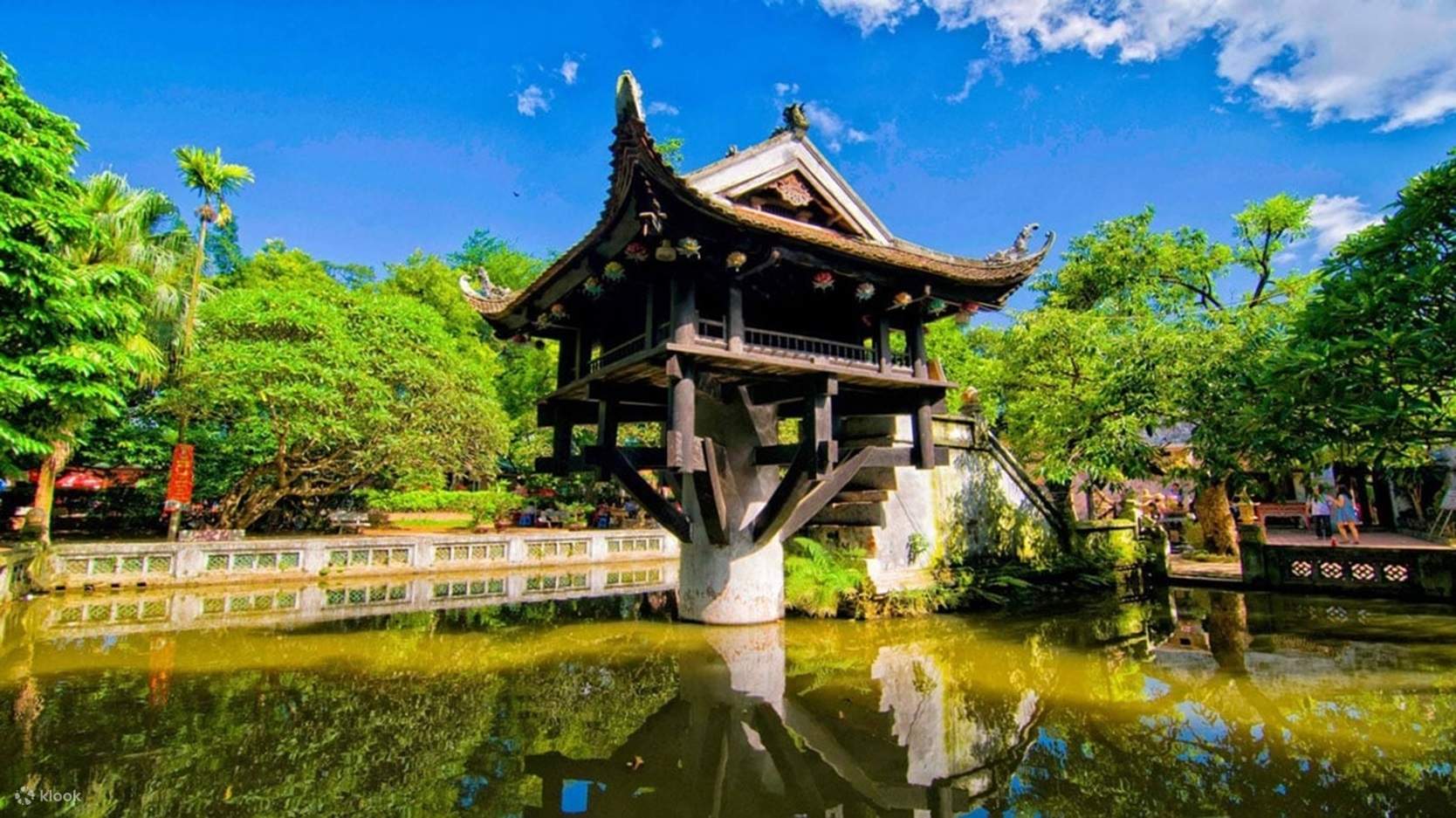Ho Chi Minh Mausoleum: A Must-see Spot in Your Trip to Hanoi
When visiting Hanoi, not only Vietnamese people but also international tourists hope to pay a visit to the Ho Chi Minh Mausoleum at least once. The Ho Chi Minh Mausoleum remains a sacred and meaningful destination for both the Vietnamese and visitors from around the world. This site is not only where President Ho Chi Minh’s body is preserved, but also stands as a powerful symbol of the capital’s cultural and historical heritage. Let My VietNam Tours will help travelers gain a deeper understanding of the Mausoleum and enjoy unforgettable experiences during their visit.
Top 3 Interesting Facts about Ho Chi Minh Mausoleum
The Mausoleum Was Built Against the Will of Uncle Ho
President Ho Chi Minh typed the first draft of his will on May 10, 1965, and revised it twice, once in 1968 and again on May 10, 1969, just months before his passing. In his will, he expressed a wish to be cremated and have his ashes divided into three urns placed in the North, Central, and South of Vietnam.

Uncle Ho’s handwritten will. Cre: tuoitre
However, after his death, out of deep love and respect, the Politburo (3rd Central Committee) chose not to follow his wish. Believing it was essential for future generations to have a place to honor and remember him, they decided to preserve his body in a mausoleum, becoming a lasting symbol of national unity, respect, and admiration for Uncle Ho.
Construction of the Ho Chi Minh Mausoleum began on September 2, 1973, at Ba Dinh Square, where he had declared independence, and was inaugurated on August 29, 1975. The site includes Ba Dinh Square, the Presidential Palace, and Uncle Ho’s stilt house.
The Mausoleum stands 21.6 meters tall, with a lotus-shaped roof and a ruby stone inscription of “Ho Chi Minh.” It serves as both a memorial and a place of pilgrimage for generations to come.

President Ho Chi Minh Mausoleum was built at Ba Dinh Square. Photo by: istock
6 Years to Complete
Building the Ho Chi Minh Mausoleum was a massive national effort that spanned nearly 6 years (1969–1975), involving collaboration with the Soviet Union and even enduring wartime bombings. Despite being paused during the U.S. air raids in 1972, construction resumed after the Paris Peace Accords. On August 29, 1975, the Mausoleum was officially inaugurated, standing as a powerful symbol of unity, resilience, and the Vietnamese people’s enduring respect for their beloved leader.

The inauguration ceremony of Uncle Ho’s Mausoleum took place on August 29, 1975. Photo by: thanhhuycantho
Inspired by Lenin, Built by the People of Vietnam
Though Uncle Ho longed to see the South again, the war kept him from fulfilling that wish. In his place, the people united to build a Mausoleum that would one day welcome all Vietnamese, North, Central, and South, to visit, pay their respects, and remember his legacy as one.
Construction began on September 2, 1973, and materials were carefully chosen from every corner of the country. Sand came from the Kim Bôi stream in Hòa Bình, brought by Mường ethnic villagers. Pebbles were gathered from northern rivers in Sơn Dương, Chiêm Hóa, and Tuyên Quang. Stones arrived from Thanh Hóa, Chùa Thầy, and the red mountains of Non Nước, while 16 types of precious wood were sent from the Trường Sơn range. Youth and students contributed by polishing stone, planting trees, and caring for the grounds with deep respect.
Around the Mausoleum, symbolic flora were planted: ban flowers from Điện Biên, chò trees from Đền Hùng, and bamboo from Cao Bằng, each chosen to reflect the land and soul of Vietnam. Above the entrance, the words “Chủ tịch Hồ Chí Minh” are carved in red ruby stone, and his guiding motto, “Không có gì quý hơn Độc lập, Tự do” (Nothing is more precious than independence and freedom), gleams in gold beside his signature.
Inside, President Ho Chi Minh rests simply and humbly, just as he lived, wearing a faded khaki outfit and rubber sandals. Surrounding him are 79 cycads, one for each year of his life, and two rows of resilient bamboo, the enduring symbol of the Vietnamese spirit.
When Is the Best Time to Visit the Ho Chi Minh Mausoleum?
The Ho Chi Minh Mausoleum has different opening hours depending on the season. Use the schedule below to plan your visit:
|
Monday & Friday |
closed |
closed |
|
Tuesday – Thursday |
7:30 AM – 10:30 AM |
8:00 AM – 11:00 AM |
|
Saturday & Sunday |
7:30 AM – 11:00 AM |
8:00 AM – 11:30 AM |
Tips for Travelers:
- On special dates such as May 19 (President Ho Chi Minh’s Birthday), September 2 (National Day), and the first day of Lunar New Year, the Mausoleum remains open, even if these fall on a Monday or Friday.
- The Mausoleum is closed annually for maintenance for about two months, usually from September to November.
- Don’t miss the Flag Raising Ceremony at 6:00 AM and the Flag Lowering Ceremony at 9:00 PM daily, held at Ba Dinh Square, just outside the Mausoleum.
Attractive Destinations Near President Ho Chi Minh’s Mausoleum
The journey to explore the history and culture of the capital does not end at President Ho Chi Minh’s Mausoleum. Nearby, there are many other fascinating attractions that offer visitors deeper insights into Hanoi’s rich heritage. These destinations not only reveal important historical and cultural aspects of the city but also allow visitors to learn about key periods in the life and struggle of the Vietnamese people. Below are several sites near the Mausoleum that visitors can explore.
>> Explore More:
The Flag Raising and Lowering Ceremonies at the Mausoleum
Each day, Ba Dinh Square, in front of the Ho Chi Minh Mausoleum, hosts two of Vietnam’s most solemn national rituals: the Flag Raising Ceremony at 6:00 AM and the Flag Lowering Ceremony at 9:00 PM.
These ceremonies are conducted by the Honor Guard, beginning with a procession from behind the Mausoleum, led by the Victory Flag. A platoon of 34 soldiers, representing the first 34 members of the Vietnamese Liberation Army, marches in unison to the base of the flagpole. There, three Red Flag soldiers step forward to perform the ceremonial procedures.
At the command, the national flag is raised high to the stirring sound of the Vietnamese national anthem, fluttering above Ba Dinh Square as a symbol of pride, unity, and sacrifice.
Visiting during these moments offers a rare and powerful experience, witnessing not only military precision and tradition but also the deep patriotism that continues to define Vietnam. On national holidays like September 2 (National Day) or May 19 (President Ho Chi Minh’s Birthday), the ceremonies are even more moving and symbolic, drawing larger crowds in reverent silence.

The Flag Raising Ceremony and The Flag Lowering Ceremony at Ba Dinh Square
Photo by: baochinhphu
Ho Chi Minh Museum
The Ho Chi Minh Museum is one of the most significant cultural and historical landmarks in Vietnam, located within the Ba Dinh historical complex in Hanoi. The museum preserves and exhibits thousands of valuable documents and artifacts related to the life, revolutionary career, and ideology of President Ho Chi Minh. Visitors can enjoy guided tours that highlight the most important milestones in his life.
Opening hours:
|
Monday & Friday |
closed |
closed |
|
Tuesday – Sunday |
8:00 AM – 12:00 AM |
2:00 PM – 16:30 PM |
Ho Chi Minh museum – a place to preserve uncle Ho’s heritage and ideology
Ho Chi Minh’s Stilt House
Ho Chi Minh’s Stilt House is a key part of the Presidential Palace Historical Site and is located about 500 meters from the Mausoleum. This was President Ho Chi Minh’s residence from 1958 until his passing in 1969. Nestled amidst lush gardens and a fish pond, the stilt house reflects his simple lifestyle and serves as a symbol of his revolutionary ethics and ideology.
Opening hours:
|
Monday & Friday afternoons |
closed |
closed |
|
Summer (April 1 – October 31): |
7:30 AM – 11:00 AM |
1:30 AM – 4:00 AM |
|
Winter (November 1 – March 31): |
8:00 AM – 11:00 AM |
1:30 PM – 4:00 PM |

Uncle Ho’s stilt house and his noble and simple lifestyle. Photo by: vietnamtravel
Presidential Palace
Located within the Ho Chi Minh Mausoleum Complex in Hanoi, the Presidential Palace is a grand French colonial-style building originally constructed in the early 20th century to house the Governor-General of Indochina. Today, it serves as the official workplace of the President of Vietnam. Though the building itself is not open to the public, visitors can admire its impressive architecture from the outside and explore the surrounding gardens and historical sites.

Visiting President Ho Chi Minh Relic Site at the Presidential Palace – A place that preserves memories of him. Photo by: congthongtindulichquanbadinh
Hanoi Botanical Garden
Hanoi Botanical Garden is one of the oldest and most tranquil parks in the capital, often referred to as the “green lung” of the city. Located about 650 meters from President Ho Chi Minh’s Mausoleum, the garden features a vast collection of rare and exotic plant species from around the world. It is an ideal destination for nature lovers seeking peace and relaxation in a lush green setting.

Enjoy the peaceful view in Hanoi Botanical Garden.
One Pillar Pagoda
The One Pillar Pagoda is one of the most unique architectural structures in Vietnam. Situated within the Ho Chi Minh Mausoleum Complex, it stands out as a symbol of Hanoi’s cultural and historical heritage. Designed to resemble a lotus blossom rising from a pond, the pagoda reflects the purity and serenity of Buddhist philosophy. It is a must-visit landmark for anyone coming to the area.

One Pillar Pagoda – Unique Architectural Symbol of Hanoi. Photo by: eggyolkcoffee
Notes and regulations when visiting Uncle Ho’s Mausoleum
- Please pay attention to dressing neatly, appropriately, and modestly to show respect.
- Be mindful to avoid making noise, pushing, or shoving. Before entering the Ho Chi Minh Mausoleum, remember to take off your hat and refrain from putting your hands in your jacket or pants pockets.
- It is not allowed to bring any recording or photography devices inside the Mausoleum, and please ensure that your phone is muted before entering.
- Food or drinks are prohibited in the Mausoleum.
- After the visit, your belongings will be returned to you.
- Please ensure that you maintain cleanliness both inside and outside the Mausoleum.
- Children under 3 years old are not allowed to visit Ho Chi Minh Mausoleum.
Ho Chi Minh Mausoleum is not only a place to preserve the image and great thoughts of the father of the nation, but also a sacred symbol connecting the heroic past with the dynamic present of the capital Hanoi. A visit to the Ho Chi Minh Mausoleum not only helps visitors understand more about the history of the nation, but is also an opportunity to pause, reflect and feel the value of peace, independence and patriotism. Contact us now through Whatsapp or the My Vietnam Tours to plan a visit to Ho Chi Minh Mausoleum on your Hanoi discovery journey.


